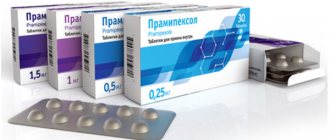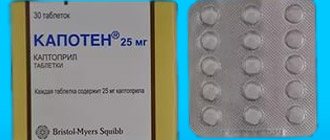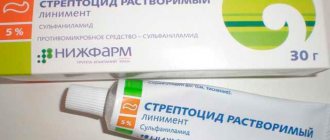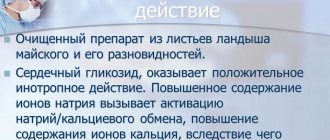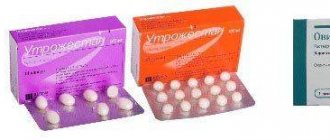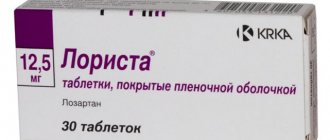Timolol is an eye drop designed to lower eye pressure. The name of the drug coincides with the name of the main active ingredient. The chemical compound timolol is a non-selective beta-adrenergic receptor blocker with local membrane-stabilizing activity. The mechanism of action of the drug is aimed at reducing the level of intraocular pressure by reducing the amount of aqueous humor (intraocular fluid) formed and somewhat facilitating the possibility of its outflow from the chambers of the eye.
Operating principle
In terms of pharmacotherapeutic properties, Timolol is classified as a beta blocker.
Its group analogs, available in tablet form, are often prescribed for arterial hypertension as a means for daily use. The mechanism of action of Timolol is to partially block beta-adrenergic receptors, which respond to the increase in adrenaline and norepinephrine in the blood. There are 2 types of such receptors. In the ciliary body of the eye, which is involved in the production of fluid and focusing vision, the second type predominates. Stimulation of these receptors by hormones leads to an increase in the production of intraocular fluid. When the receptors are blocked by Timolol, the opposite effect occurs - fluid secretion is suppressed, and the pressure inside the eye drops. In addition to their effect on fluid formation, beta blockers also have a concomitant effect - widening the intertrabecular gaps, which usually narrow in glaucoma. This action is accompanied by an increase in the outflow of fluid from the eye, which leads to an additional drop in pressure.
The pressure begins to decrease after 20 minutes. after instillation of Timolol, the effect of the drug reaches a maximum after 2 hours. The effect of eye drops lasts for at least a day. The average pressure drop when using drops is 25% of the original. Drops with an increased concentration of Timolol 0.5% are approximately 10-15% more effective than drops of 0.25%.
Most of Timolol (about 80%) is absorbed through the mucous membranes, conjunctival vessels and enters the blood, so eye drops can have a systemic effect, for example, slightly lower blood pressure. Timolol is excreted from the bloodstream along with urine.
Pharmacological action and group
Timolol belongs to the pharmacological group of non-selective beta adenoceptor blockers. The mechanism of action of the drug does not disrupt the accommodation of the eye (the ability to clearly perceive objects that are at different distances from the viewer), and also does not change the size of the pupil. Accordingly, Timolol eye drops do not affect visual acuity and the quality of night vision. The effect of the drug can appear within 20 minutes after use, the maximum duration of effect after a single instillation of the drug is about a day.
special instructions
Monitoring the effectiveness of Timolol should be carried out approximately 21-28 days from the start of treatment. During the therapy period, at least once every six months, it is necessary to monitor the integrity of the cornea, tear function and visual field.
Timolol contains benzalkonium chloride (a preservative), which can be adsorbed on the surface of soft contact lenses, and therefore their use is not recommended during therapy. Hard contact lenses should be removed before instillation and put on no earlier than 15 minutes after the end of the procedure.
With prolonged therapy, the effect of Timolol may weaken.
When transferring a patient to treatment with the drug, refraction correction may be required.
Timolol should be discontinued 48 hours before surgery using general anesthesia.
Two beta blockers should not be instilled into the eyes at the same time.
Prescribe Timolol simultaneously with glucocorticosteroids, psychoactive drugs and antihypertensive drugs with caution. Concomitant use with antipsychotic (neuroleptics) and anxiolytic (tranquilizers) drugs is contraindicated
Concomitant use with antipsychotic (neuroleptics) and anxiolytic (tranquilizers) drugs is contraindicated.
During the period of therapy, care must be taken when driving vehicles and performing other potentially dangerous types of work that require speed of psychomotor reactions, high concentration and good vision (for 30 minutes after instilling the drug into the eye)
Side effects
If side effects occur, the drug should be discontinued and consult a doctor.
Timolol drops can lead to a number of negative reactions. They cause the following side effects:
- allergic reactions, which manifest themselves in the form of itching, skin irritation, angioedema, rashes and bronchospasms;
- headaches, dizziness, general weakness, drowsiness or problems sleeping;
- irritation of the mucous membrane of the eyes, a feeling of dryness, itching and burning in the organ of vision, inflammation of the eyelids, keratitis, photophobia and increased lacrimation;
- signs of suffocation, shortness of breath, swelling of the nasal mucosa and cough;
- rapid heartbeat, irregular heart rhythm, cardiac arrest;
- cerebral ischemia;
- collapse with arterial hypotension;
- dyspeptic disorders and severe weight loss;
- significant hair loss;
- decreased sexual desire.
Such side effects can be caused not only by eye drops, but also by an ointment with a similar effect.
When using these drugs, you need to pay attention to your condition and if you experience even the slightest discomfort, immediately consult a doctor.
Overdose
When applied topically in therapeutic doses, cases of overdose practically do not occur.
If accidentally taken orally, symptoms such as bradycardia, decreased blood pressure, headache, dizziness, nausea, vomiting, and bronchospasm may occur. In this case, symptomatic therapy is prescribed. Dobutamine is used to treat arterial hypotension, and isoprenaline is administered intravenously to eliminate bronchospasm or severe bradycardia.
Drug analogues
Among the analogues of Timolol eye drops, the following drugs can be noted:
- Azarga.
- Arutimol.
- Betalmik.
- Betoptik.
- Ganfort.
- Duotrav.
- Jotim.
- Carteol.
- Combigan.
- Lanotan T.
Azagra reduces intraocular pressure very well. Intended for use by adult patients. The drug should be purchased only after the recommendation of a doctor.
Arutimol is actively used for glaucoma. It is prescribed to adult patients who cannot use Timolol. Betalmik is used in the treatment of chronic glaucoma. The drug is very effective as part of complex therapy.
Betoptik is used for glaucoma and increased intraocular pressure. The drug is an excellent analogue of Timolol. It is better if the patient buys it on the recommendation of a doctor.
The drug Ganfort is used for patients with open angle glaucoma. It is quite expensive, but very effective. Duotrav affects the eye membrane very gently and carefully.
The cost of the drug cannot be called high. If you want to use it, you should consult your doctor.
Iotime is actively used to treat glaucoma in adults. The drug reduces intraocular pressure; it should be used after consultation with an ophthalmologist.
The remaining drugs have approximately the same characteristics. Each of them should completely replace Timolol.
If you are interested in a specific medicine, then you should familiarize yourself with its composition. The level of effectiveness for the patient will be visible during the treatment process. Medicines from this list can completely replace Timolol.
Medicines for treating eye problems should be used carefully. The patient must listen carefully to the doctor's advice.
If Oftan Timolol, Long or Akos are not suitable, then you need to choose analogues. A doctor can always recommend good eye drops.
Contraindications
Due to the fact that the active substance from eye drops can penetrate into the bloodstream, contraindications to the use of Timolol are not only eye diseases, but also other diseases:
- cardiac dysfunction: arrhythmia, slow heart rate, acute or decompensated chronic heart failure. Cardiovascular pathologies contribute to a decrease in the number of beta receptors and reduce their response to adrenaline, so blocking them with Timolol may be excessive;
- pulmonary pathologies, including bronchial asthma, since they have a significant impact on the cardiovascular system;
- corneal dystrophy of any form;
- allergy to substances contained in the drops;
- childhood. This contraindication is relevant for all Timolol drops, except for Timolol-pos. Timolol-pos is approved for use in children in reduced dosages;
- vasomotor rhinitis in severe form.
Pregnancy and breastfeeding are not a contraindication for treatment with Timolol. If the mother is at high risk of vision loss, her doctor may prescribe these eye drops. The drug is able to penetrate into the bloodstream of the fetus and into breast milk, therefore the instructions for use of Timolol recommend enhanced medical monitoring of the health of the woman and newborn.
Additionally: Retinopathy is a diabetic complication of the eyes
Drug interactions
With simultaneous use of Timolol:
- Systemic beta-blockers, epinephrine, pilocarpine cause an increase in its effect;
- reserpine may contribute to the development of arterial hypotension or severe bradycardia, so this combination requires careful medical supervision;
- calcium channel blockers, cardiac glycosides can cause arterial hypotension, AV conduction disorders, acute left ventricular failure;
- muscle relaxants increase their effect;
- local anesthetics increase the risk of their negative effects on the cardiovascular system;
- ethanol can cause a sharp decrease in blood pressure.
Indications
Timolol can be prescribed by an ophthalmologist as part of complex therapy for the following diseases:
- open angle glaucoma,
- secondary glaucoma;
- ocular hypertension.
Timolol is used as an auxiliary drug:
- together with miotics in the treatment of angle-closure glaucoma;
- in case of ineffectiveness of other therapeutic measures for congenital glaucoma;
- to relieve an acute attack of increased intraocular pressure.
Used when necessary to reduce spasms of the eye muscles.
Contraindications
Timolol eye drops should not be used if the following diseases occur:
- dystrophic disease of the cornea;
- bronchial asthma;
- chronic obstructive pulmonary disease;
- acute or chronic heart failure;
- sinus bradycardia;
- AV block II and III degrees;
- cardiogenic shock;
- rhinitis (including allergic).
It is necessary to use the drug with caution if the patient is diagnosed with:
- diabetes;
- emphysema;
- non-allergic chronic bronchitis;
- Raynaud's disease;
- severe form of cerebrovascular insufficiency;
- hyperthyroidism;
- thyrotoxicosis;
- hypoglycemia;
- arterial hypotension;
- vasomotor rhinitis;
- myasthenia gravis.
The use of Timolol drops is contraindicated for people who are hypersensitive to any components of the drug.
During pregnancy
The effect of timolol on the intrauterine development of a child has not yet been fully studied. It has been proven that the substance can pass the placental barrier. The use of Timolol eye drops is possible only in a situation where the intended therapeutic effect outweighs the risk to fetal development.
For small children
When treating children under ten years of age, Timolol drops are used only in the form of a 0.25% solution. It is allowed to instill one drop twice a day. Older children with insufficiently expressed therapeutic effect are allowed to use a 0.5% solution in a similar dosage.
conclusions
Timolol eye drops are classified as adrenergic blocking drugs and are used when necessary to reduce intraocular pressure. The drug should be used only as directed and under the supervision of an ophthalmologist. Timolol drops have a number of contraindications. The medicine is prescribed with extreme caution to pregnant women. It is important to strictly follow the dosage indicated in the specialist’s prescription and not to self-medicate.
We also recommend that you read the instructions for using Polinadim eye drops.
Indications for use
According to the instructions, Oftan drops are indicated for the treatment of cataracts of various origins. The list of contraindications for this medication is small - age under 18 years and hypersensitivity.
The drug is considered an analogue of the drug "Timolol" in terms of therapeutic action. In comparison, Oftan has a rather narrow range of side effects, which include:
- contact dermatitis;
- burning sensation in the eyes;
- conjunctivitis of allergic origin;
- short-term tingling;
- short-term shortness of breath;
- dizziness;
- nausea;
- arterial hypotension;
- sensation of pulsation and heat in the temples.
Benefits and harms
Doctors prescribe Timolol to patients of different categories. The benefits of medicinal liquid for the eyes are very great.
It can help patients obtain the following treatment effects:
- improving the outflow of intraocular fluid;
- pressure inside the eye decreases;
- the risk of developing serious diseases is reduced;
- protects patients from the development of glaucoma;
- improves human vision;
- Helps relieve severe eye fatigue.
Patients under 18 years of age may be harmed. If you have bronchial asthma and lung diseases, then nothing good will happen. Severe tearing may occur.
Additionally, itching and redness of the mucous membrane will be observed. Harm may also include blurred vision. Overdose often causes headaches. Drowsiness and decreased blood pressure may also occur.
Minor children can experience great harm. Such patients should not use the medicine.
The drug is very strong and must be prescribed by a doctor. If the doctor does not approve, then you should not buy the medicine.
Possible complications caused by the drug
Using Timolol eye drops can cause a number of unwanted effects. Local side effects:
- sensation of itching and irritation in the eye area;
- tearfulness;
- redness in the mucous membrane of the eye;
- photophobia;
- manifestations of blurred vision;
- blepharitis;
- keratitis;
- ptosis;
- diplopia.
If the drug is used for a long time, the development of superficial keratopathy is possible. Systemic disorders:
- allergy;
- nasal congestion;
- nausea, vomiting);
- drowsiness;
- headache, dizziness;
- lowering blood pressure, slowing heart rate;
- AV block;
- bronchospasm, shortness of breath;
- erectile disfunction;
- tinnitus.
In case of an overdose of the drug, general resorptive consequences may occur, which are typical for beta-blockers. In this case, you need to rinse your eyes with water. If the undesirable effects are very strong, symptomatic therapy is carried out.
Undesirable consequences when using Timolol drops can occur when used simultaneously with adrenergic blockers, glucocorticosteroids, cytochrome inhibitors, muscle relaxants, diltiazem, verapamil.
How to use
The rules for using drops are simple. They are indicated in the instructions, but it should be remembered that the doctor can make his own decision regarding the use of Timolol - it may be slightly different from the method recommended by the instructions. It all depends on the type of disease and its stage in a given patient.
Usually, in the first few days, a drop of medicine is instilled twice a day - in the morning and in the evening. It is necessary to get into the conjunctival sac, for which the lower eyelid is slightly retracted. After the ophthalmologist is sure that the pressure has returned to normal, he can reduce the dosage and leave 1 drop per day.
A 0.25% solution is used, however, if there is no effect of treatment, the ophthalmologist suggests a 0.5% drug.
Contraindications
The drug has few contraindications, which is why it is so popular. These include:
- childhood and adolescence (up to 18 years);
- asthma;
- allergic and any other rhinitis in the acute stage;
- heart failure;
- severe bradycardia (slow heart rate);
- condition immediately after a heart attack;
- uncompensated diabetes mellitus.
As for the dangers of using drops by women during pregnancy and breastfeeding, this issue should be discussed with a doctor on an individual basis.
Side effects
Timolol can cause some side effects, so be attentive to yourself and do not delay visiting the doctor if the following symptoms that appear after instillation do not go away within 1-2 days:
- redness of the eyelids;
- stinging, pain in the eyes;
- photophobia;
- swelling;
- burning.
It is extremely rare, but even retinal detachment does occur, especially in the postoperative period.
The above applies to local effects. There are also a number of common ones, since Timolol enters the bloodstream in small quantities. This:
- headache;
- dizziness;
- weakness;
- dyspnea;
- heartbeat;
- cough.
If any of these manifestations are observed, discontinuation of the drug and selection of an analogue are required.
The same applies to cardiac glycosides - when used in conjunction with Timolol drops, they can provoke a drop in pressure and left ventricular failure.
Price and analogues
The cost of drops in the pharmacy chain is low - it is approximately 35-40 rubles. The medicine is available to all groups of the population.
If you are intolerant to any of the components of the drug or experience any adverse or allergic reactions, consult an ophthalmologist. Suitable replacements:
- "Ocumed";
- "Oftan timolol";
- "Kuzimol";
- “Fumigated.”
You should not try to find a replacement yourself based on information gleaned from the Internet. This is the task of a specialist with the necessary knowledge.
Contraindications and restrictions
Before starting treatment with Timolol, the doctor should check his patient for contraindications to the use of this drug.
| Absolute contraindications | Relative contraindications |
|
|
If there are absolute contraindications, treatment with this drug is unacceptable. In the case of relative prohibitions, the option of using the medicinal composition under the supervision of a physician is considered.
Use of the drug during pregnancy and breastfeeding
To date, the manufacturer of Timolol does not provide any information about how the drug affects the intrauterine development of a child. Given this information, it is advisable for pregnant women to refrain from using the medicine. This treatment option is allowed only if the potential benefit to the mother significantly outweighs the possible danger to the fetus.
Timolol cannot be treated during lactation. Therefore, patients have to give up breastfeeding in order to undergo full therapy.
Indications and contraindications Akos
Doctors strongly recommend using the medication for people with the following problems:
- presence of open-angle glaucoma;
- increased secondary glaucoma or post-traumatic;
- a strong increase in tone inside the eye due to increased fluid production;
- presence of angle-closure glaucoma.
A number of contraindications include the presence of bronchial asthma. Sinus bradycardia is also a contraindication to the use of Timolol Akos. Drops cannot be used in acute and chronic heart failure.
Cardiogenic shock is a direct contraindication for use; if there is a dystrophic disease of the cornea, then the solution should not be used. Rhinitis and hypersensitivity cannot be treated with Timolol either.
Timolol is very rarely prescribed to children, but there are such cases. In order to start using it, you should be examined by a doctor. If there are no contraindications, you can regularly instill drops into your eyes.
Timolol is a powerful medicine that helps treat eye diseases. The drug has a fairly extensive composition, due to which a good effect is achieved.
The medicine is not addictive and should be used for quite a long time. If necessary, the patient should take a break.
Before going to the pharmacy, a person should consult his doctor. Timolol has a number of side effects and contraindications. After studying these points, a person will know whether the medicine is suitable specifically for him.
You can find medicine in almost every pharmacy. Doctors very often prescribe such medications to patients. If you use the product too often, a negative reaction occurs.
An overdose always ends in a number of unpleasant consequences. The drug should be used carefully, following the advice of a doctor.
Oftan
This is a combined medication that improves energy metabolism in the lens.
The medicine is used for cataracts and contains active elements such as nicotinamide, cytochrome C, adenosine. These substances are part of the metabolites of the eye lens, coenzymes nicotinamide adenine dinucleotide and nicotinamide adenine dinucleotide phosphate, with an increase in the content of which the period of cataract development significantly decreases.
The substance adenosine is a precursor of angiotensin-converting enzyme. It participates in the metabolic process in the lens, dilates blood vessels, promotes the rapid restoration of microcirculation in the eyes, normalizes blood oxygen saturation and the removal of toxins, and actively stimulates A2 receptors in cell membranes. Thanks to this, inflammation processes in the cornea, anterior chamber of the eye and conjunctiva slow down.
As a component of the enzyme glutathione reductase and NADP, adenosine is an intermediary in the processes of glutathione reduction occurring in the lens.
The substance cytochrome C is an antioxidant that neutralizes the effects of free radicals on the cornea of the eye. Participates in biochemical oxidative and reduction processes in the eyeball. By acting directly on the lens, this substance inhibits the production of cytochrome oxidase, thereby reducing the likelihood of developing cataracts.
Eye drops are a low-toxic drug, so they can also be used for preventive purposes.
The analogue of Timolol, Oftan, has an effect not only on the lens. It has been established that it has an antioxidant, antibacterial, anti-inflammatory and disinfectant effect on the surface of the eye, and stops the development of infectious diseases in the anterior parts of the eye. The medicine moisturizes well and eliminates visual fatigue.
Dorzolamide
This is another analogue of Timolol. Eye drops are classified as carbonic anhydrase inhibitors. The medication selectively inhibits the functionality of human carbonic anhydrase II, an enzyme present in many tissues (including the eye) and involved in the processes of dehydration of carbonic acid and hydration of carbon dioxide. In humans, this substance is represented by different isoenzymes, the most active of which is carbonic anhydrase II. By inhibiting the ciliary body of the eye, it helps to reduce the production of intraocular fluid (mainly by reducing the formation of bicarbonate ions with a further decrease in the transport of fluid and sodium ions).
With topical use of the Timolol analogue Dorzolamide in the form of a 2% solution for the eyes, the level of intraocular pressure decreases. It, in turn, is a leading risk factor for damage to the optic nerves and glaucomatous damage to the visual organs.
Dorzolamide hydrochloride is indicated for the treatment of elevated intraocular pressure in people with open-angle glaucoma and hypertension.
The only contraindication to the use of the Timolol analogue of Dorzolamide eye drops is hypersensitivity. Their use is fraught with the possible occurrence of some adverse reactions. However, in comparison with those observed during treatment with the original remedy, such negative symptoms are extremely insignificant and in most cases manifest themselves in the form of irritation reactions.
Analogs
Timolol has structural analogues on pharmacy shelves - drops based on the same active ingredient (timolol maleate) and with an identical mechanism of action.
- Arutimol - costs on average (5 ml bottle) 60 rubles.
- Okupres-E is produced in two concentrations - 0.25% and 5%. The average price of both forms of release differs slightly and averages 40 rubles (capacity 5 ml).
There are drops on the pharmaceutical market that have an effect similar to Timolol, but differ in composition.
- Betoptik is an imported drug (USA, Belgium) based on betaxolol hydrochloride, which reduces the production of ocular fluid and, thereby, eliminates ocular hypertension (high blood pressure). The average cost in pharmacies (5 ml bottle) is 340 rubles.
- Betaxolol is a medicine with the active ingredient betaxolol hydrochloride. The average price for 5 ml is 115 rubles.
- Betofan is a beta-blocker based on betaxolol. A bottle with a capacity of 5 ml costs an average of 175 rubles.
Timolol eye drops
The active ingredient in the drug is timolol maleate, which is a beta-blocker. Due to this, Timolol has an antiglaucoma effect and reduces the production of intraocular fluid. The use of drops is indicated for adults and children, starting from newborn age. You can learn about the composition and side effects from the instructions.
Composition and release form
The drug is available in two forms, differing in the concentration of the active substance - timolol maleate: 0.25% and 0.5%. Drops are a colorless transparent liquid, poured into plastic bottles equipped with a dropper stopper. Timolol ointment is not available. Composition of drops:
| Compound | Weight, mg |
| Active substance | 3,4 |
| Auxiliary components: | |
| sodium hydroxide, benzalkonium chloride, sodium chloride, disodium edetate dihydrate, sodium dihydrogen phosphate, disodium monohydrate, phosphate dodecahydrate, purified water. |
Pharmacodynamics and pharmacokinetics
The drug belongs to non-selective highly active beta-adrenergic receptor blockers. Timolol lacks membrane stabilizing and sympathomimetic activity. When used locally as prescribed (eye drops), the drug is able to reduce intraocular pressure by reducing the secretion of intraocular fluid. Does not change pupil size. The therapeutic effect begins to appear 10-30 minutes after the drug enters the conjunctival area and lasts 12-24 hours. The functionality of the drug is maintained throughout sleep.
The drug substance is able to very quickly overcome the cornea. Small amounts of the drug penetrate the systemic bloodstream through absorption through the vessels of the nasal mucosa, conjunctiva, and lacrimal tract. It binds to plasma proteins by 10%. Timolol is able to cross the placental and blood-brain barriers and pass into breast milk. Biotransformation of the substance occurs inside the liver, it is secreted by the intestines and kidneys in its original form and in the form of metabolites. In children, the concentration of the active component in plasma is higher than in adults.
Indications for use
The decision to use Timolol is made taking into account the specifics of the active substance, which has the desired therapeutic effect for the following diseases and disorders:
- open-angle chronic glaucoma;
- acute increase in ophthalmotonus;
- secondary glaucoma (post-traumatic, uveal, afactual);
- angle-closure glaucoma (as a complementary agent for reducing intraocular pressure, in combination with miotic solutions);
- congenital glaucoma pathology;
- intraocular hypertension;
Release form and composition
Dosage form – eye drops 0.25% and 0.5%: transparent colorless liquid (0.25%: 1 ml, 1.5 ml, 2 ml or 5 ml in a dropper tube, in a cardboard pack 1, 2, 5, 10, 50 or 100 pcs.; 5 ml or 10 ml in a bottle, in a cardboard box 1, 5 or 50 pcs. complete with a dropper; 5 ml in a dark glass bottle or 10 ml in a bottle, in a cardboard box 1 , 5 or 50 pcs.; 1 ml each in a dropper tube, 2 pcs in a blister pack, 1 pack in a cardboard box; 5 ml each in a bottle with a dropper stopper, 1 pc in a cardboard box; 0.5% : 1 ml, 1.5 ml, 2 ml or 5 ml in a dropper tube, in a cardboard pack of 1, 2, 5, 10, 50 or 100 pcs.; 10 ml in a polymer dropper bottle, in a cardboard pack of 1 , 2, 5, 10, 50 or 100 pcs.; 1 ml each in a dropper tube, 2 pcs in a strip pack, 1 pack in a cardboard box; 5 ml each in a bottle with a dropper cap, 1 pc in a cardboard box .; 5 ml or 10 ml per bottle, in a cardboard pack 1, 5 or 50 bottles complete with a dropper; 5 ml or 10 ml per bottle, in a cardboard pack 1, 5 or 50 pcs.).
1 ml drops contain:
- active ingredient: timolol maleate – 3.4 mg (0.25%) or 6.8 mg (0.5%), which is equivalent to the content of 2.5 mg or 5 mg of timolol, respectively;
- auxiliary components: sodium chloride, disodium phosphate dodecahydrate, benzalkonium chloride, sodium dihydrogen phosphate monohydrate, sodium hydroxide, disodium edetate dihydrate, purified water.
Rules of application
When it comes to vision, it is especially important to follow all the recommendations of your doctor. Self-medication in this case is unacceptable, as it can quickly lead to a deterioration of the condition up to complete blindness.
According to a 2003 study, the main cause of vision loss in patients with glaucoma is non-compliance with prescribed treatment: missed instillations, unauthorized withdrawal of the drug due to poor tolerability. To preserve vision, the use of eye drops must be continued even if side effects occur. In this case, you need to try to get to an ophthalmologist as quickly as possible to adjust the treatment.
As a rule, at first Timolol is prescribed in a higher dosage: 1-2 drops into the affected eye twice a day. The dosage is selected depending on the initial pressure level. As soon as the pressure has returned to normal, they switch to a maintenance regimen: 1 drop per day is instilled into the eye with glaucoma, preferably in the morning.
How to instill the drug correctly:
- Preparation: wash your hands, remove your contact lenses, warm the bottle of drops between your palms.
- Lift your face up. Hold the upper eyelid with your index finger, and pull the lower eyelid down with your thumb.
- Place the prescribed number of drops into the opened conjunctival sac (the cavity between the lower eyelid and the sclera). Each press on the Timolol bottle gives one drop.
- Close your eye, lightly press your finger on its inner corner, and hold for 30 seconds. This technique prevents drops from flowing into the lacrimal canal, thereby enhancing their local effect.
- Open your eyes and blink several times to clear the surface of your eye of excess fluid.
How to use
You can buy the drug in a pharmacy only with a doctor's prescription. This is due to the danger of self-medication. The medicine is prescribed after a thorough examination. The instructions describe the general treatment regimen, which, depending on the patient’s health condition and the characteristics of the course of the disease, can be adjusted by an ophthalmologist. Dosages depend on age and look like this:
- children under 10 years of age (including newborns) - 1 drop of 0.25% solution twice a day in each eye;
- adults and adolescents - 1 drop of a 0.25% solution in each eye twice a day, and in case of insufficient effectiveness - 1 drop of a 0.5% solution in each eye twice a day.
When eye pressure normalizes (as determined by the doctor), the dose is reduced to maintenance - 1 drop of a 0.25% solution once a day.
When instilling, follow the following sequence of actions.
- Wash your hands.
- Remove contact lenses (hard ones can be inserted only 15 minutes after instillation, and you will have to completely stop wearing soft ones during treatment, since the concentrate included in the medicine settles on their material).
- Warm the bottle of medicine in your palms.
- Unscrew the cap.
- Tilt your head up.
- Gently pull back the lower eyelid and secure the upper eyelid with your finger.
- Drop the required amount of medicine into the opened conjunctival sac.
- Close your eye and press the area at the inner edge of your eyelids for half a minute - this will prevent liquid from entering the tear duct.
- Open your eye, blink for a few seconds and repeat the procedure with the other eye.
Timolol is used in long courses - on average, 6 weeks.
It is important for patients undergoing therapy to know:
- the effectiveness of the drug is monitored approximately 3-4 weeks from the start of treatment;
- over time, addiction to the product occurs, its effect weakens, and the question arises of selecting a suitable analogue;
- 2 drugs of the beta-blocker class cannot be instilled into the eyes at the same time;
- when treating with Timolol, the integrity of the cornea, the width of the visual field and the functioning of the tear function are monitored at least once every six months;
- within half an hour after instillation, the patient’s reaction rate may be somewhat slowed down and the ability to concentrate may be reduced;
- two days before surgery accompanied by the use of general anesthesia, the medicine is discontinued.
Instructions and side effects
In the initial period of the disease, the drug is prescribed 1-2 drops into the diseased organ of vision (eye drops 0.25% or 0.5%) 2 times a day. If intraocular pressure returns to normal with systematic use, the dose is reduced to 1 drop in the morning once a day. Treatment with Timolol is long-term; a break is possible only by the decision of the attending physician.
Despite the effectiveness, many patients prefer to use Timolol analogues with fewer side effects. Let's take a closer look. Possible negative reactions from using the product we describe include:
- burning, itching in the eyes;
- redness of the conjunctiva and skin of the eyelids;
- lacrimation, decreased tear production, photophobia, swelling of the corneal epithelium;
- impaired visual acuity;
- blepharitis;
- conjunctivitis;
- decreased transparency of the cornea (point keratopathy), decreased sensitivity;
- ptosis, diplopia;
- bradyarrhythmia, decreased myocardial contractility, bradycardia, heart failure, AV block, chest pain, cerebrovascular accident, collapse, cardiac arrest;
- drowsiness, headache, dizziness, hallucinations, decreased reaction speed, depression, paresthesia;
- decreased potency;
- nasal congestion, nosebleeds, shortness of breath, bronchospasm, pulmonary insufficiency;
- diarrhea, vomiting nausea;
- ringing in the ears, muscle weakness, urticaria.
Instructions for use of Timolol: method and dosage
Timolol eye drops are intended for topical use by instillation into the conjunctival sac of the eye.
Recommended dosage:
- children under 10 years of age, including newborns: 0.25% solution - 1 drop 2 times a day;
- patients over 10 years of age: 0.25% solution - 1 drop 2 times a day. If there is no sufficient clinical effect, use a 0.5% solution - 1 drop 2 times a day. After normalization of intraocular pressure, the patient is transferred to the use of a 0.25% solution in a maintenance dose of 1 drop once a day.
Pharmacokinetics
Timolol penetrates through the cornea into the eye tissue at high speed. After it enters the aqueous humor of the anterior chamber of the eye, the maximum concentration of the substance in the blood plasma is recorded after 1-2 hours. A small amount enters the systemic circulation, being absorbed through the mucous membranes of the lacrimal tract and nose, as well as through the conjunctiva.
The maximum level of timolol in blood plasma is approximately 0.824 ng/ml and remains below the detection threshold for 12 hours. In newborns and young children, its maximum concentration in blood plasma significantly exceeds that in adults. The half-life of timolol when applied topically is 4.8 hours. It is metabolized in two ways, forming either an ethanolamine side chain on the thiadiazole ring to form an ethanol side chain connected to the morpholine nitrogen, or a similar side chain with a carbonyl group connected to the nitrogen. The CYP2D6 isoenzyme takes part in metabolic processes. The substance and its metabolites are excreted mainly in the urine, with approximately 20% of timolol being excreted unchanged.
Composition and operating principles
The main active ingredient of the drug is timolol maleate. The ingredient blocks beta-adrenergic receptors, which helps reduce the secretion of intraocular fluid and facilitate its outflow from the chambers of the eye. Due to this mechanism, intraocular pressure decreases. The action of the active component begins 30 minutes after the medicine enters the body and lasts about a day. The maximum effect is observed after about 2 hours.
The medicine does not change the diameter of the pupil, does not reduce visual acuity, does not affect night and color vision, and does not impair accommodation (the ability of the visual system to perceive objects of high quality at different distances from the eyes).
In small quantities, timolol is absorbed into the systemic circulation (including through the vessels of the conjunctiva and the lacrimal canal). Therefore, common side effects are possible (more on that below). The drug is excreted from the body through the kidneys along with urine.
Important: the absorption of the drug is higher in children than in adults.
In addition to the active ingredient, the drug also contains auxiliary ingredients: water, sodium chloride, benzalkonium chloride, sodium dihydrogen phosphate monohydrate, disodium edetate dihydrate and some others.
